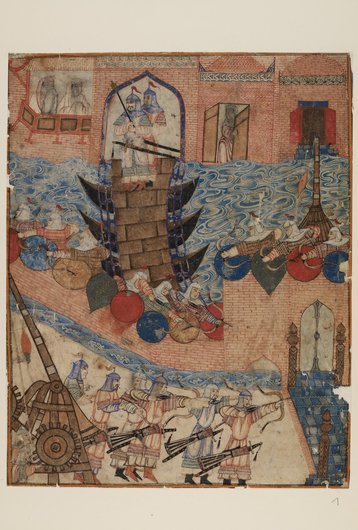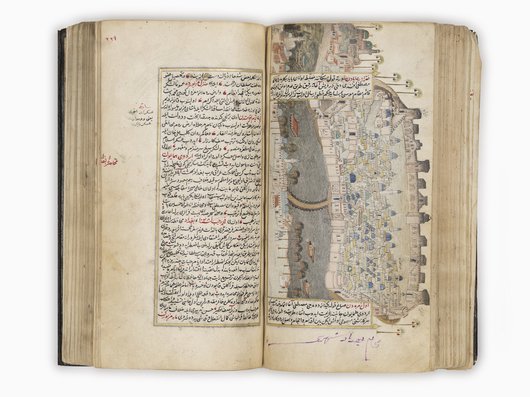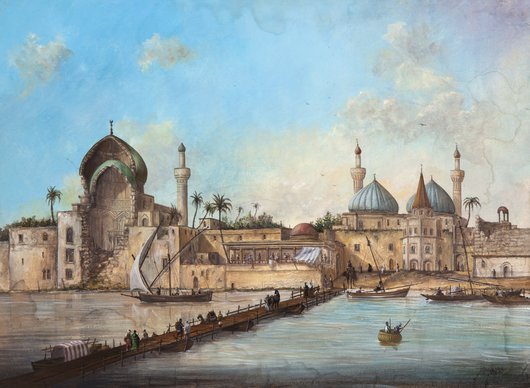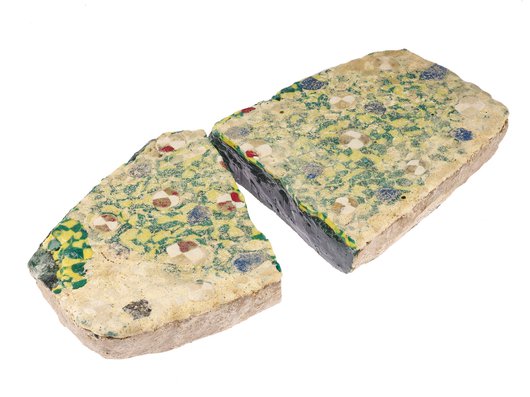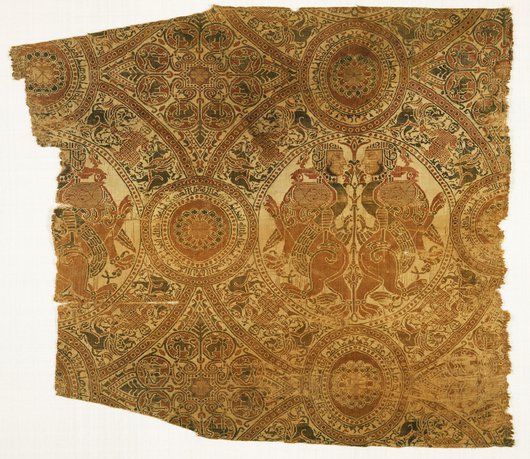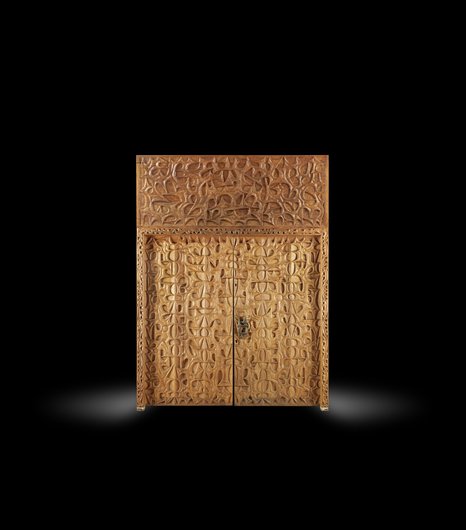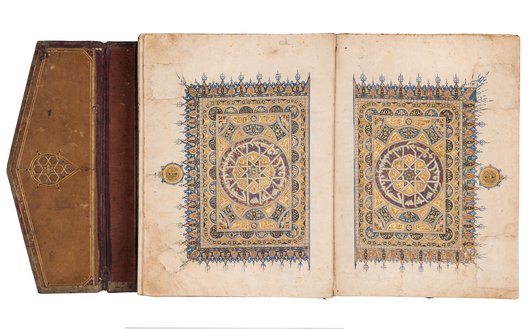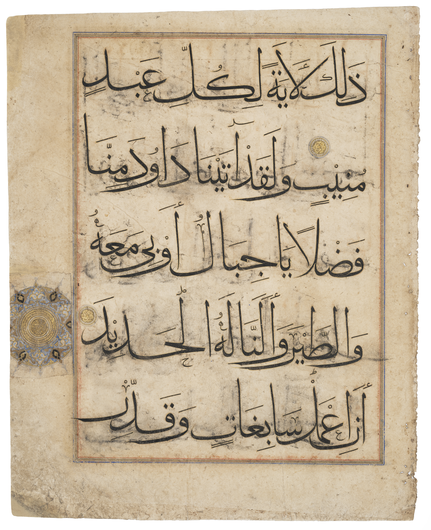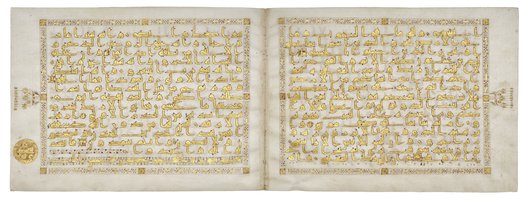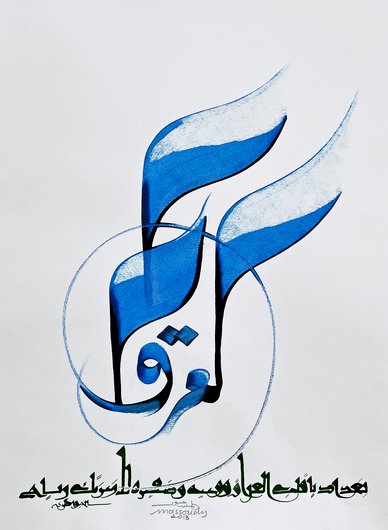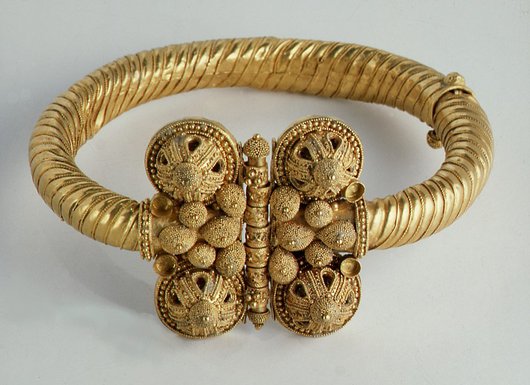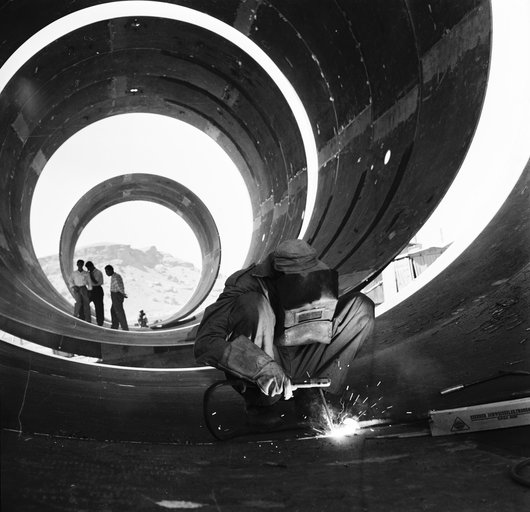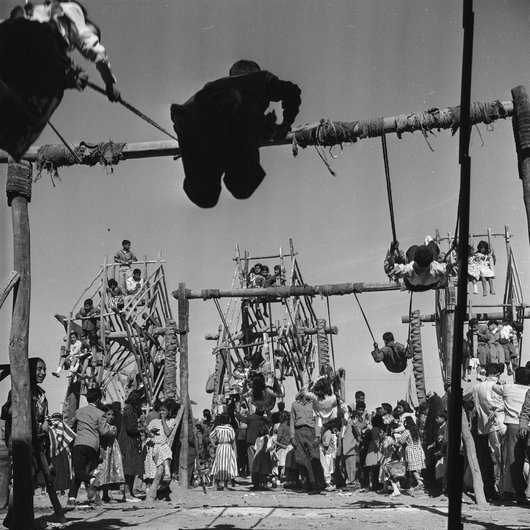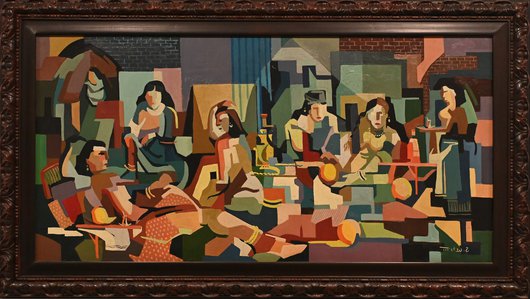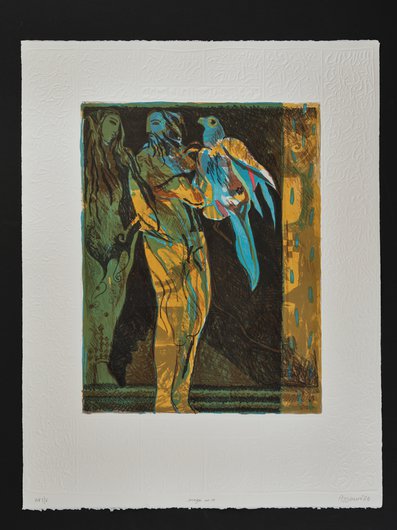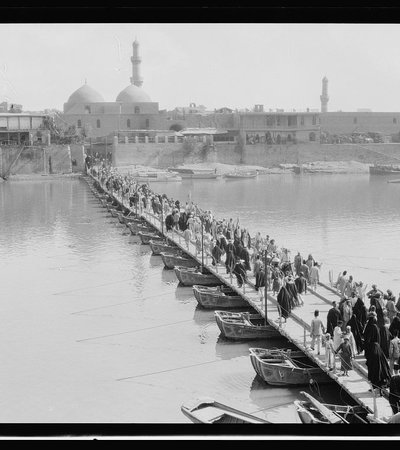Baghdad: Eye’s Delight – About the Galleries
Baghdad: Eye’s Delight celebrates the capital of Iraq as one of the most important and influential cities in the Islamic world.
When the Abbasid caliph al-Mansur looked for a capital for his new empire, his eye fell on a fertile site on the Tigris River at the junction of historic trade routes. The site was far away from Damascus, the capital of his predecessors, the Umayyads, and close to Ctesiphon, the seat of the pre-Islamic Sasanians who ruled Iraq and Iran for centuries before.
Inspired by notable pre-Islamic examples, al-Mansur decided to build a round city with a mosque and palace at its centre. Built exclusively for himself and his court, he named it the ‘City of Peace’ (Madinat al-Salam). He then developed the marshy lands outside his city to settle the growing population.
“ Is there any equivalent to the City of Peace?! A miracle! You will not find for Baghdad any parallel. ”‘Ali ibn al-Husayn al-Wasiti (d. 919)
Baghdad was the largest city in the world for much of the Abbasid era. Later it continued to serve as the provincial centre, including under Ottoman rule, which lasted from the 16th to the early 20th century. As the capital of the Republic of Iraq from 1958, it has again undergone huge transformations, turning into the mega-metropolis of today with over 7.6 million inhabitants.
City of Palaces
The Abbasids ushered in an era of strong government and also sponsored architecture remarkable for its monumentality, beauty and artistry. They held court in Baghdad and Samarra, where they built majestic palaces with lavish interiors, labyrinthine structures, pavilions, vast gardens and racecourses. As symbols of wealth and power, these complex palatial structures set artistic and architectural trends which spread throughout the Abbasid empire.
The Abbasid style came back into fashion in the 20th century, especially during the time of King Faisal II (1939-1958) and then Saddam Hussein (1979-2003). Baghdad once again became an urban and artistic powerhouse and a stage for buildings of power. Recalling the glorious days of architectural splendour under the Abbasids, Baghdad’s cityscape was transformed into a backdrop for magnificent buildings and sculptures, often echoing Abbasid aesthetics and giving the city a unique visual identity.
City of Knowledge
The Abbasid caliphs were great supporters of scholarship. Through their patronage, Baghdad became the intellectual powerhouse of its time. Famous learning institutions and libraries, such as the Bayt al-Hikma (House of Wisdom) were founded there, attracting students and scholars from across the Islamic world. The rise of a written scholarly culture contributed to the formation of a new class of skilled calligraphers, aided largely by the introduction of paper from China and the adoption of a more legible style of writing in Arabic, called naskh.
A growing market for books also emerged with educated readers finding in Abbasid Baghdad their ideal destination. Nowadays, book lovers can continue to roam around the bookshops of al-Mutanabbi Street, the beating heart of Baghdad’s literary scene. The culture of the city continues to inspire contemporary calligraphers, students and scholars today. The modern universities established in the second half of the 20th century are themselves reflections of Baghdad’s glorious intellectual heritage.
City of Markets and Commerce
The rich cultural and intellectual life that characterised Baghdad in the Abbasid period was made possible by the city’s thriving economy. Baghdad was ideally located in the fertile lands between the Tigris and Euphrates Rivers, from which the Abbasid caliphs engineered a network of canals to irrigate the surrounding farmlands. These in turn supplied food to the capital and the entire region.
Trade formed another important revenue system. The Abbasids built up the port city of Basra on the Arabian Gulf and encouraged trade by strengthening diplomatic relations with rulers in China, Central Asia and Europe. As a result, Baghdad’s markets thrived, attracting merchants from across the world in search of luxury goods. The 20th century was another prosperous time for Baghdad. The wealth generated by the discovery of oil was invested in developing new industries, modernising infrastructure and building transport links to connect the city to Europe and the rest of Asia.
City of the People
By the 10th century, Baghdad boasted a population of around one and a half million people; today, with over 7.6 million inhabitants, it is the second largest capital in the Arab world. Despite its turbulent history of floods, plagues, political struggles, invasions and wars, Baghdad has always remained home to residents of different ethnic and religious backgrounds.
From its foundation, the city attracted a diverse population of Sunni and Shi‘a Muslims, Christians, Jews and Zoroastrians. Over the centuries, these communities contributed to the city’s rich, cosmopolitan life – whether gathering together around marketplaces, coffee shops and libraries or participating freely in large religious or social celebrations. While New York City had been called ‘Baghdad on the Hudson’ following its phenomenal expansion after World War II, in exchange Baghdad could be celebrated as ‘New York on the Tigris’.
